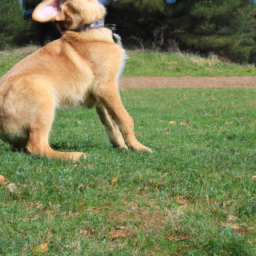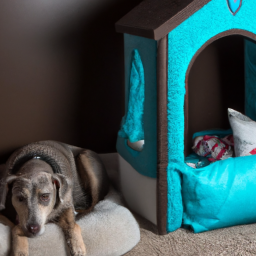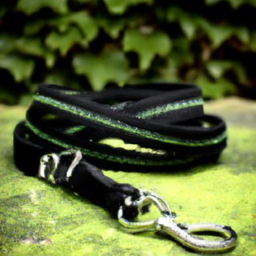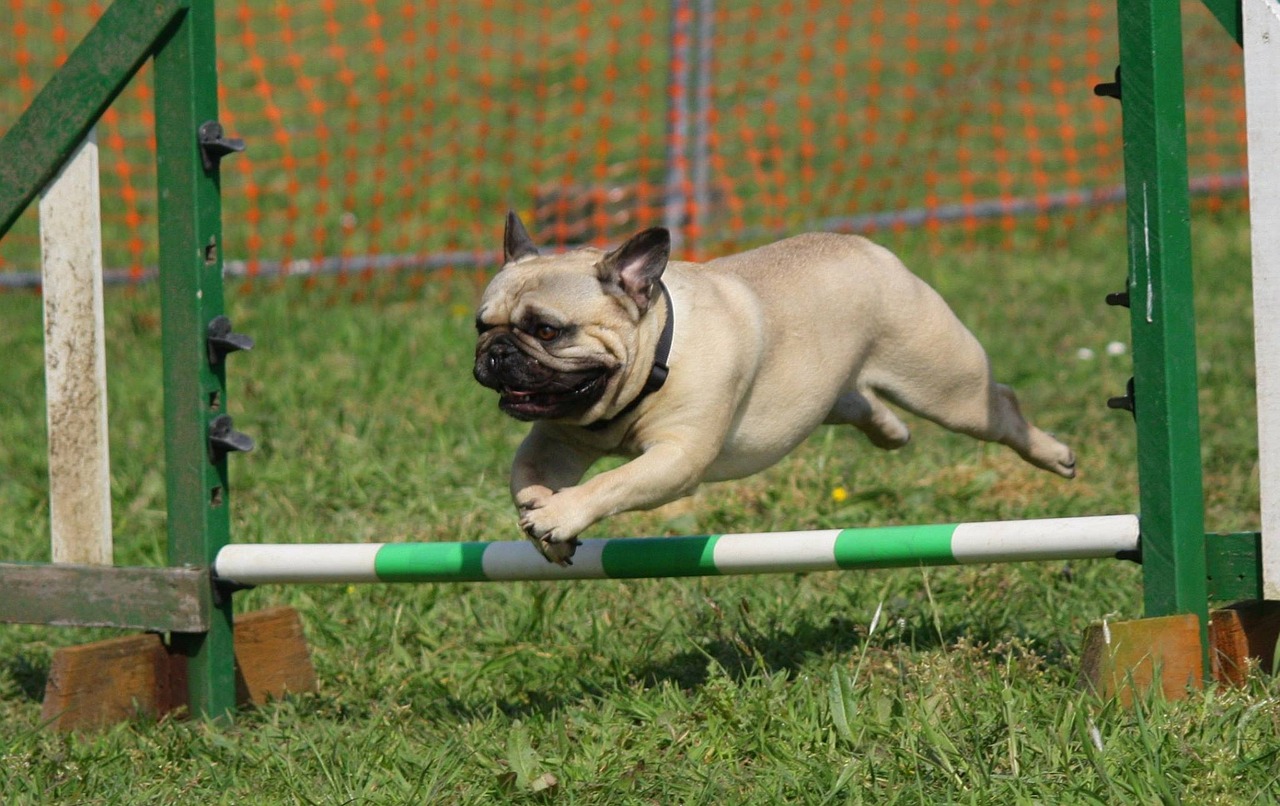Training Techniques For A Well-Behaved And Happy Pup

Imagine having a well-behaved and happy pup that brings joy and harmony to your household. In this article, you will discover effective training techniques that will transform your furry friend into a well-mannered and content companion. With a friendly approach and expert tips, you’ll learn how to build a strong bond with your pup, address behavioral issues, and create a positive learning environment. Get ready to embark on a rewarding journey towards having a well-behaved and happy pup!
Setting the Foundation
Establishing a Routine
One of the first steps in training your new pup is to establish a routine. Dogs thrive on consistency, so having a set schedule will help them understand what is expected of them. This includes feeding times, potty breaks, playtime, and training sessions. By following a routine, you create a sense of order and predictability, which can greatly assist in your pup’s overall training progress.
Creating a Safe Environment
Before you begin training, it’s essential to create a safe environment for your pup. This involves removing any potential hazards or objects that could be harmful to them. Keep electrical cords, toxic plants, and small objects out of reach. Also, consider investing in safety gates or playpens to restrict access to certain areas of your home. A safe environment will not only protect your pup but also allow you to focus on training without worrying about their safety.
Building a Bond with Your Pup
Building a strong bond with your pup is crucial for successful training. The more connected your pup feels to you, the more motivated they will be to listen and learn. Spend quality time with your dog through play, cuddling, and gentle grooming. Use positive reinforcement to reward good behavior, which will further strengthen the bond between you and your pup. Remember to be patient and understanding as you build this relationship, as it takes time and effort to develop a strong bond.
Positive Reinforcement Training
Understanding the Power of Positive Reinforcement
Positive reinforcement is a highly effective training technique that involves rewarding your pup for desired behavior. By using praise, treats, or toys, you can reinforce behaviors that you want to encourage. Positive reinforcement not only teaches your pup to associate good behavior with positive outcomes but also promotes a trusting and positive relationship between you and your furry friend. Through positive reinforcement, your pup will be motivated to repeat behaviors that earn them rewards.
Using Treats Effectively
Treats are a valuable tool in positive reinforcement training. When using treats, it’s important to choose high-value rewards that your pup finds especially enticing. This could be small pieces of cooked chicken, cheese, or commercial dog treats. Use treats sparingly, breaking them into small pieces to avoid overfeeding and to keep your pup motivated. Additionally, be mindful of the nutritional content of the treats and adjust your pup’s regular meals accordingly to maintain a balanced diet.
Rewards and Verbal Praise
In addition to treats, verbal praise is an essential component of positive reinforcement training. Dogs crave their owner’s approval and thrive on praise and encouragement. When your pup performs a desired behavior, such as sitting on command, immediately offer enthusiastic verbal praise, such as saying “Good dog!” or “Well done!” Use a happy and upbeat tone to communicate your satisfaction. Verbal praise, when paired with treats and physical affection, reinforces your pup’s understanding of what behaviors you desire.
Clicker Training
Clicker training is another effective form of positive reinforcement. With clicker training, you use a small handheld device that emits a clicking sound to mark the exact moment your pup performs a desired behavior. This distinct sound helps your pup understand that they have done something right, and a reward will follow. The clicker becomes a powerful tool in shaping your pup’s behavior, as it provides clear communication and precise timing.
Consistency in Training
Consistency is key in positive reinforcement training. To effectively teach your pup, you must consistently reinforce desired behaviors and promptly correct unwanted behaviors. Use the same commands, reward system, and training techniques throughout the training process. Consistency provides clarity for your pup and helps them understand what is expected of them. Inconsistency can lead to confusion, making training more challenging for both you and your pup.
House Training and Crate Training

Establishing a Bathroom Routine
House training, also known as potty training, is an essential part of raising a well-behaved pup. Start by establishing a consistent bathroom routine. Take your pup out first thing in the morning, after meals, after playtime, and before bedtime. Puppies have small bladders and need frequent bathroom breaks. Stay with your pup outside until they have successfully eliminated, and be sure to reward them with verbal praise and a treat to reinforce the proper behavior.
Consistency with Potty Training
Consistency is crucial when potty training your pup. Take them to the same designated spot every time they need to eliminate. This helps them associate that specific location with the act of going potty. If accidents happen indoors, clean the area thoroughly with an enzymatic cleaner to remove any lingering scent. Avoid scolding or punishing your pup for accidents, as this can create fear and hinder the potty training process. Instead, focus on rewarding and reinforcing desired bathroom behaviors.
Introducing Crate Training
Crate training is a valuable tool for both house training and creating a safe space for your pup. Introduce the crate gradually, making it a positive and comfortable space for your pup to retreat to. Start by keeping the crate open during the day and placing treats and toys inside to encourage exploration. Once your pup is comfortable entering and exiting the crate, you can begin closing the door for short periods. Eventually, your pup will see the crate as their den and a place of security.
Making the Crate a Positive Space
To ensure that your pup sees the crate as a positive space, make it cozy and inviting. Place a soft blanket or bed inside for comfort. Offer treats and toys exclusively in the crate to create positive associations. Never use the crate as a punishment, as this will create fear and anxiety. Instead, use the crate as a peaceful retreat or a safe place to confine your pup when necessary. With time and consistency, your pup will come to view their crate as their own special place.
Basic Obedience Commands
Teaching Sit
Teaching your pup the “sit” command is one of the most fundamental obedience commands. Start by holding a small treat close to your pup’s nose, and then slowly move it upwards. As your pup’s nose follows the treat, their bottom will naturally lower into a seated position. As soon as their bottom hits the ground, say the word “sit” and give them the treat. Repeat this process several times, gradually phasing out the treat and relying solely on the verbal command and praise.
Training the Come Command
The “come” command is crucial for ensuring your pup’s safety and managing their behavior. Start by practicing in a controlled environment with minimal distractions. Get down to your pup’s level and confidently say their name followed by “come.” Encourage them to come to you by opening your arms and using an excited and happy tone. When your pup reaches you, reward them with verbal praise and a treat. As they become more reliable, gradually increase the distance and add distractions to reinforce their response to the command.
Mastering Stay
Teaching your pup to stay is an important command that can prevent them from running into dangerous situations. Begin with your pup in a sit position. Hold your hand up, palm facing your pup, and say the word “stay.” Take a step back and, if your pup remains in place, immediately reward them with verbal praise and a treat. Gradually increase the distance and duration of the stay, always reinforcing with rewards. Remember to release your pup from the stay command with a release word such as “okay” to indicate they can move again.
Walking on a Leash

Proper leash walking is essential for both your pup’s safety and your enjoyment during walks. Start by getting your pup accustomed to wearing a collar or harness and attaching the leash. Begin indoors with minimal distractions, allowing your pup to explore while you hold onto the leash. Use verbal cues like “let’s go” or “heel” to encourage your pup to walk beside you. When they do, reward them with verbal praise and a treat. Gradually transition to walking outdoors, reinforcing good walking behavior with rewards.
Training the Leave It Command
The “leave it” command is useful for preventing your pup from picking up potentially harmful or inappropriate items. Hold a treat in your closed hand and present it to your pup, saying “leave it.” When your pup stops trying to get the treat from your hand, reward them with a different treat and verbal praise. Repeat this process, gradually increasing the difficulty by using more enticing items and practicing in different environments. The “leave it” command can be a lifesaver in situations where your pup encounters something they shouldn’t have.
Socialization Skills
The Importance of Socialization
Socialization is vital for raising a well-rounded and confident pup. It involves exposing your pup to various people, animals, environments, and situations from an early age. Proper socialization helps your pup develop positive associations and reduces the likelihood of fear or aggression towards unfamiliar stimuli. Regular socialization sets the foundation for a lifetime of positive interactions and helps prevent behavioral issues in the future.
Introducing Your Pup to Different Environments
Expose your pup to different environments gradually, starting with less overwhelming places and gradually progressing to more stimulating ones. Begin by introducing them to your home and backyard, and then venture out to quiet parks or streets. Gradually increase the complexity of the environments, including exposure to busy streets, crowded areas, and different types of surfaces. Always supervise your pup during these experiences and reward them for displaying calm and confident behavior.
Positive Experiences with People and Animals
Socialize your pup by introducing them to a variety of people and animals in a controlled and positive manner. Invite friends and family over to interact with your pup, ensuring they use calm and gentle approaches. Encourage your pup to approach and interact with other well-socialized dogs, always under close supervision. Reward your pup for appropriate behavior and provide them with a safe retreat if they become overwhelmed. Positive experiences with people and animals will help your pup develop healthy and friendly relationships.
Dog Park Etiquette
Visiting a dog park can be a great way to socialize your pup with other dogs and people. However, it’s essential to follow proper dog park etiquette to ensure a positive experience for everyone involved. Always closely supervise your pup and intervene if any signs of aggression or discomfort arise. Clean up after your pup to maintain a clean and safe environment for all visitors. Respect the rules of the dog park and be mindful of your pup’s behavior to ensure a pleasant outing for everyone.
Addressing Behavioral Issues
Understanding Problem Behaviors
Addressing behavioral issues requires an understanding of their underlying causes. Many problem behaviors, such as excessive barking, destructive chewing, or aggression, can stem from fear, anxiety, boredom, or lack of appropriate training. Identifying the root cause will guide your training approach and help you address the behavior effectively. If you are unsure about the cause or struggling to address a specific issue, consulting a professional dog trainer or behaviorist can provide guidance and support.
Barking Problems
Excessive barking is a common problem behavior that can be addressed through training and management techniques. Firstly, identify the triggers for your pup’s barking, such as strangers, other dogs, or loud noises. Introduce positive reinforcement training to redirect your pup’s attention and reward calm behavior instead. Provide mental and physical stimulation through interactive toys and regular exercise to prevent boredom-related barking. Additionally, desensitization and counterconditioning exercises, gradually exposing your pup to their barking triggers, can help them become more comfortable and less reactive.
Jumping Up on People
Jumping up on people is a behavior that can be addressed through consistent training and management. Teach your pup an alternative behavior, such as sitting or offering a paw, to greet people instead of jumping. Practice obedience commands and reinforce the desired behavior with rewards and praise. Use consistent management techniques, such as having guests ignore your pup until they are calm and then rewarding them for appropriate behavior. Consistency and positive reinforcement will teach your pup that remaining calm is more rewarding than jumping up.
Dealing with Separation Anxiety
Separation anxiety is a challenging behavior that requires patience and understanding. Gradual desensitization and counterconditioning techniques can help your pup become more comfortable with being alone. Start by leaving them alone for short periods and gradually increase the duration over time. Create a positive association with your departure by giving your pup interactive toys or puzzles to keep them occupied. Providing a safe space, such as a crate or a designated area with comforting items, can also help alleviate anxiety. In severe cases, seeking the assistance of a professional behaviorist may be necessary.
Aggression Towards People or Other Animals
Aggression in dogs can be a serious problem that requires professional intervention. If your pup displays aggression towards people or other animals, it is crucial to prioritize everyone’s safety and seek help from a professional behaviorist. Aggression can stem from fear, anxiety, territoriality, or other underlying issues. A qualified behaviorist can assess the situation, provide a tailored training plan, and guide you through desensitization, counterconditioning, and management techniques to address the underlying causes and manage the aggressive behavior.
Advanced Training Techniques
Training Tricks and Commands

Once your pup has mastered basic obedience commands, you can introduce more advanced tricks and commands to keep their training engaging and mentally stimulating. Teach your pup to shake hands, roll over, or play dead. These fun tricks not only impress friends and family but also strengthen your pup’s bond with you through continued training and positive reinforcement. Remember to break down more complex commands into smaller steps to ensure your pup’s success and always end training sessions on a positive note.
Target Training
Target training involves teaching your pup to touch a specified object, such as a target stick or your hand, with a specific body part. It is a versatile and useful technique that can be used to teach various behaviors, from basic obedience commands to more complex behaviors like retrieving objects or guiding your pup through agility courses. By utilizing positive reinforcement and breaking the training process into small steps, you can teach your pup to target specific objects on command, expanding their behavior repertoire.
Off-Leash Training
Training your pup to be reliable off-leash can be both liberating and practical in certain situations. However, it requires extensive training and a solid foundation in basic obedience commands. Start in a secure, enclosed space and gradually increase the level of distraction and difficulty. Use long training leads initially to ensure your pup’s safety while giving them the freedom to explore. Positive reinforcement, paired with rewards and praise, will encourage your pup to stay close and respond to commands even when off-leash.
Boundary Training
Boundary training is useful for establishing physical or invisible boundaries that restrict your pup’s access to certain areas. This can be particularly helpful in keeping them out of designated rooms, away from specific objects, or within a specific perimeter. Start by using visual markers or physical barriers to indicate the boundaries. Whenever your pup approaches the boundary, redirect them with a command or a treat and reward them for staying within the allowed area. Consistency and repetition will help your pup understand and respect the established boundaries.
Training for Specific Needs
Therapy Dog Training
Therapy dog training prepares dogs to provide comfort and support to individuals in need, such as hospitals, nursing homes, or schools. It focuses on teaching dogs to be calm, well-behaved, and responsive in a variety of environments. Basic obedience commands, good socialization skills, and the ability to remain calm and gentle around different people and situations are essential for therapy dogs. Certified therapy dog programs and professional trainers can guide you through the process and certification requirements for your pup to become a therapy dog.
Service Dog Training
Service dog training is specialized and tailored to individual needs. Service dogs assist individuals with disabilities, providing daily tasks, mobility support, or medical assistance. The training is extensive and specific, often requiring professional guidance to ensure the dog is reliable, obedient, and able to perform tasks safely and effectively. Legal requirements and regulations regarding service dogs vary depending on the location. It is crucial to research and follow the appropriate guidelines when training a service dog.
Assistance Dog Training
Similar to service dogs, assistance dogs are trained to assist individuals with disabilities or specific needs. Assistance dogs may help with tasks such as retrieving items, opening doors, or providing emotional support. The training process may involve obedience training, task training, and public access training. Assistance dog training programs and professional trainers can provide guidance and support, ensuring that the dog’s training is tailored to the individual’s specific needs.
Training for Dog Sports or Competitions
Training for dog sports or competitions is a fantastic way to challenge your pup mentally and physically while strengthening your bond. Sports such as agility, obedience, flyball, or scent work require specialized training techniques tailored to the specific sport. Enrolling in a dog sports class or working with a professional trainer can provide valuable guidance and help you develop the skills necessary for success in your chosen sport. Always prioritize your pup’s safety and well-being during training and competition.
Training Challenges and Solutions
Dealing with Stubbornness or Reluctance
If your pup is displaying stubbornness or reluctance during training, it’s essential to stay patient and persistent. Ensure that you are using positive reinforcement techniques and providing rewards that are motivating for your pup. Break down the training process into smaller, manageable steps to prevent overwhelming your pup. Keep training sessions short and engaging to maintain their focus and interest. If you encounter challenges, seek guidance from a professional dog trainer who can assess the situation and provide tailored solutions.
Overcoming Fear or Anxiety
Some dogs may exhibit fear or anxiety during training, hindering their progress. It’s important to create a safe and supportive training environment that allows your pup to build confidence gradually. Start with low-stress situations and gradually expose your pup to more challenging stimuli. Use positive reinforcement techniques to encourage and reward brave behavior. Avoid forcing your pup into situations that cause fear or anxiety, as this can worsen their response. If fear or anxiety persists, consult a professional behaviorist for guidance on appropriate training methods and techniques.
Patience and Persistence
Training a pup requires patience and persistence. Remember that every dog is unique and learns at their own pace. Stay consistent, positive, and understanding throughout the training process. Celebrate small victories and progress, even if it seems slow at times. Encourage your pup through verbal praise, treats, and affection. Often, training setbacks occur, but with patience and persistence, you can overcome them. Building a well-behaved and happy pup takes time and effort, but the rewards are immeasurable.
Seeking Professional Help
If you are struggling with training challenges or if your pup’s behavior is causing significant concerns, don’t hesitate to seek professional help. Certified dog trainers or behaviorists have the knowledge and expertise to assess your pup’s behavior, determine the underlying causes, and develop a customized training plan. They can provide you with valuable guidance and support, ensuring the training process is effective and tailored to your pup’s needs. Professional help can help you address specific challenges and ensure the well-being of both you and your furry friend.
Maintaining Training Progress
Consistency and Reinforcement
Maintaining training progress requires ongoing consistency and reinforcement. Continue to practice obedience commands and behaviors regularly, even after your pup has mastered them. Keep training sessions engaging, challenging, and rewarding to prevent boredom and regression. Consistently reinforce desired behaviors with rewards, treats, and verbal praise. Be mindful of your own consistency in following through with commands and expectations, as inconsistency can confuse your pup and undermine their training progress.
Continued Mental Stimulation
In addition to physical exercise, mental stimulation is crucial for keeping your pup engaged and mentally sharp. Provide your pup with interactive toys, puzzles, and games that challenge their problem-solving skills. Incorporate new and varied experiences into your pup’s routine, such as exploring different environments, meeting new people, and encountering unfamiliar objects. Continued mental stimulation prevents boredom, fosters a curious and adaptable mindset, and helps maintain your pup’s training progress.
Regular Exercise and Playtime
Regular exercise and playtime are essential for maintaining a well-behaved and happy pup. Dogs have varying exercise needs based on their breed, age, and overall health, so consult with your veterinarian to determine an appropriate exercise routine for your pup. Engage in daily walks, runs, or play sessions to burn off excess energy and prevent behavioral issues related to under-stimulation. Regular exercise not only keeps your pup physically fit but also enhances their mental well-being and overall behavior.
Troubleshooting Regression in Training
Regression in training can occur for various reasons, such as changes in routine, lack of practice, or exposure to new stimuli. If your pup shows signs of regression, revisit the training basics and reinforce previously learned behaviors. Identify any changes in their environment or routine that may be impacting their training progress. Ensure that you are using consistent training techniques and providing adequate positive reinforcement. By troubleshooting and addressing the underlying causes, you can help your pup regain their training progress and continue their journey towards being a well-behaved and happy companion.
Training Techniques for a Well-Behaved and Happy Pup require dedication, consistency, and a positive approach. By establishing a routine, using positive reinforcement, and addressing specific behavioral needs, you can shape your pup into a well-rounded and obedient companion. Remember to seek professional guidance when needed and continue to maintain your pup’s training progress through consistency, mental stimulation, and regular exercise. With love, patience, and understanding, you can enjoy a deep bond with your pup while experiencing the joys of a well-behaved and happy companion.